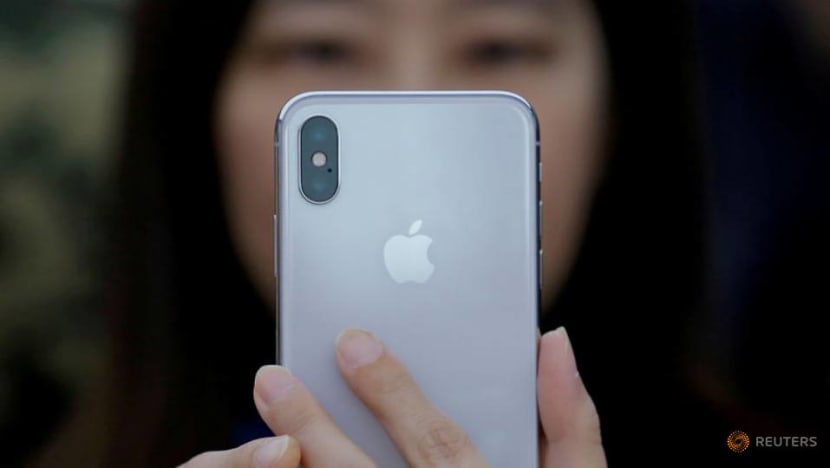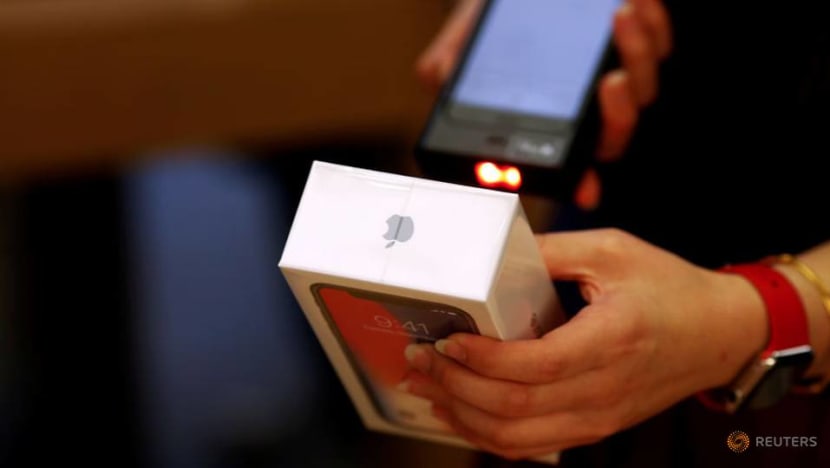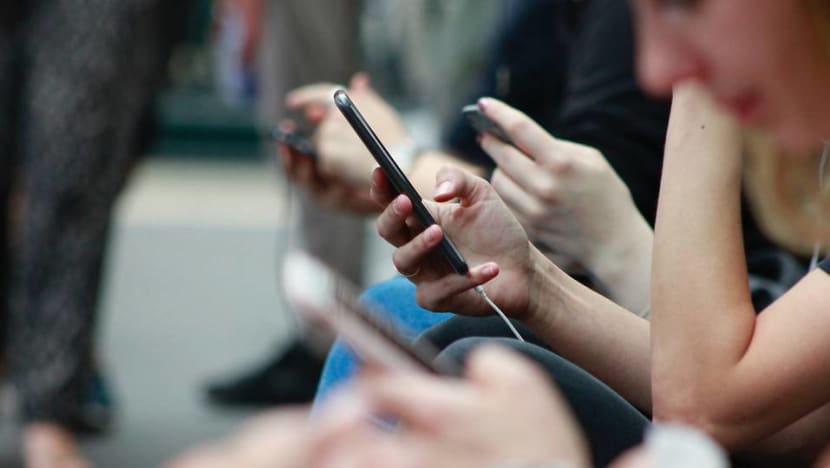commentary Commentary
Commentary: Has Apple seen the last of its glory days in China?
The Chinese market has had a taste of Apple’s luxury iPhones – and now its middle class is shifting towards home-grown brands especially Huawei, says Tom McGregor.

An attendee uses a new iPhone X during a presentation for the media in Beijing, China October 31, 2017. (File Photo: REUTERS/Thomas Peter)
BEIJING: In news that rocked the global financial markets earlier this month, Apple CEO Tim Cook issued a letter to investors early this month, disclosing that the company’s revenues, which were initially forecast to hit a target range of US$89 billion to US$93 billion for the fiscal year’s first quarter has been scaled down to US$84 billion.
The impact of the letter shocked stock markets worldwide, while Apples’ share value plunged from US$158 to US$142 in a day.
READ: The dirty truth? Apple is no longer a growth stock, a commentary
While he highlighted that the timing of iPhone launches, the strong US dollar and other economic headwinds were anticipated, Cook’s letter said Apple “did not foresee the magnitude of the economic deceleration, particularly in greater China".
The slump in the Chinese economy beginning in the second half of 2018 led to weak sales, and Apple acknowledged that traffic to its retail stores and channel partners had declined.
However, beyond its lower projected sales targets, consumers and investors were waiting to hear what Apple was going to do to pick itself up. So it was disappointing that Cook only offered his confidence in the "fundamental strength of Apple’s business", and excitement about the "pipeline of future products and services".
His only actionable strategy to shift gears took the form of a new initiative to make it simple to trade in a phone at an Apple store where one can also finance the purchase and get help transferring data.
Where he also acknowledges that “expectations are high on Apple”, his reply was lacklustre and disappointing.
TIME FOR DEEPER SELF-REFLECTION
The fact is Apple faces massive challenges in China and pointing the finger at events beyond their control as reasons for poor results, is not only unproductive but also unconstructive in thinking through how the Curpetino-based firm can boost engagement and sales with the Chinese market.
Complaints against Apple in China has been on the rise in recent years, including against its exorbitant prices (some retailers even have had to cut prices after the iPhone 8 hit the market to move sales) and widespread battery drain issues.

READ: How Apple’s iPhone lost its lustre, a commentary
The tech giant’s woes have spooked businesses watching for signs of a global recession, where Apple is widely recognised as one of the most innovative and resilient companies, having surpassed US$1 trillion in total market capitalisation last year.
Might they have also not underestimated the impact of a trade war, Cook may have saved himself the trouble of painting a rosy sales forecast at the beginning of last year.
CHINESE RIVALS JUMP INTO THE FORAY
A few years ago, iPhones were all the rage for Chinese consumers. Millions flocked to Apple flagship stores with scenes of pandemonium ensuing whenever the company introduced a new mobile device with long lines of customers anxiously awaiting to purchase them nationwide.
But it seems Apple’s glory days in China have faded. Just stroll by a department store in Beijing, such as the famed Wanda Plaza, and you are likely to walk by empty Apple stores, while Chinese smartphone makers - Huawei, Oppo, Vivo and Xiaomi - have bustling crowds amidst their soaring popularity here in recent years.
READ: Where did all the Chinese consumers go to? A commentary
These Chinese smartphone companies offer phones with comparable specifications and significantly lower prices. Among these giants, Huawei has emerged as the most popular smartphone for Chinese buyers with its Mate versions and P series gaining a loyal following.
There are luxury super-rich Chinese buyers who want the latest tech, but the vast majority of the growing middle-income Chinese who tech titans target are price-conscious consumers.
If they can buy a device of near equal quality at a cheaper price they will not hesitate to do so.
The latest Huawei mobile devices up for sale are high-quality, premium smartphones on par with iPhones, but sold at about half the price, and have played no small role in Huawei’s astronomical rise and dethroning of Apple as the world’s number two most bought smartphone brand.

Meanwhile, China’s other smartphone makers - Oppo, Vivo and Xiaomi - are selling mobile devices that are even cheaper than Huawei, catering to budget buyers.
CRITICISMS AGAINST HUAWEI BACKFIRE ON APPLE
On home ground, the Chinese have shown greater appreciation for Huawei, even though the telecommunications equipment giant and smartphone maker and its plans to provide countries with 5G wireless communications are facing greater scrutiny from Western governments and the international media, amidst concerns that its close ties with the Chinese government present national security threats.
Washington has already implemented bans on Huawei mobile devices by government agents, while it appears that Canada, Japan and a few European countries may follow suit.
But back home, the Chinese are starting to wonder if Apple was involved in persuading world governments to ban Huawei, since the Shenzhen-based company is expected to introduce a 5G-compatible smartphone later this year – a crown jewel considering that Apple will not have a 5G iPhone available to the market until 2020 at the earliest.
CAN APPLE RECOVER?
Never say never, but unless Apple is about to introduce a brand new device that will amaze the world, the Silicon Valley company faces an immense challenge recapturing its market share in the country. Apple's downward revision of expected revenue was no blip.
The Chinese love their smartphones and wherever you go in China, you will see people staring at their mobile devices when taking the subway, eating at a restaurant, walking on the sidewalk, and going shopping. But Apple’s sky-high priced devices just didn’t quite deliver a proportionately amazing user experience in return.

Where Apple’s share of the global and Chinese markets has been on the decline since 2017, Apple would do well to reflect, think hard about this episode and explore where they went wrong. Senior executives should explore what mistakes were made and address how to resolve those matters.
But have the board of directors at Apple started to ask themselves tough questions or will they continue to blame external market conditions for their woes?
If the downward revision of revenue suggests that the company is struggling, without sweeping changes, it will be hard to see how Apple can recapture a market that is increasingly looking inwards for consumer tech solutions.
Apple is expected to report quarterly earnings for the first quarter next week, where company executives will provide a detailed take on its recently revised revenue expectations. Come Jan 29 when that happens, the ball will be Tim Cook’s court.
Tom McGregor is a commentator on Asia-Pacific affairs based in Beijing.















